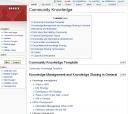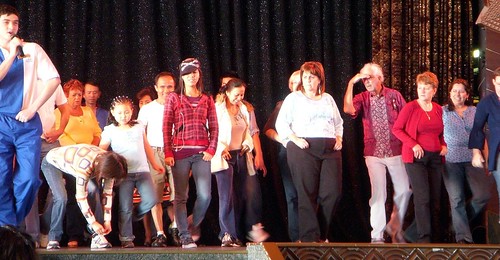
![]() photo credit: Carnavas
photo credit: Carnavas
As part of the online Knowledge Sharing (KS) in International Agriculture Development workshop, we are exploring KS tools and methods and then sharing our learning via the KS Toolkit Wiki. One tool that came up for review was Trailfire. I had not heard about it, so I put a query out on my Twitter network and in moments, Scott Leslie, a Northern Voice colleague, came to my rescue. Here is a 15 minute podcast with Scott about Trailfire and related tools used to share and comment on our journeys across the web.
Podcast: Scott Leslie on Trailfire
This tool is a Firefox plug-in, so if you want a defined group or community to use it, they all have to be FF users and agree to use the plug in. It would be interesting to test this in the international agriculture research community. (Or any other community.) There is also the wonderful bit about serendipity – finding trails left by others – their annotations and opinions — on sites that you are looking at.
Scott also shared his pre-call prep notes — which I find interesting. (Thanks, Scott!) I’ve put them below.
If you are interested in more blog posts like this, please let me know — and what tools or methods that might interest you.
Trailfire notes
Firefox plugin that works in conjunction with a main site
allows users to create “trails” which are made up of sequenced web sites
a trail mark also allows users to add an annotation to the page, so that when you are looking at that page
with the plugin enabled, you see a small mark, mousing over it shows you the full comment and
provides a link to the full trailthe website allows you to share your trails with others
you can also have the plugin show ALL trailmarks that have been made for a specific page, not just yours, which opens up
all sorts of possibilities for finding other users and finding other trails, other contexts in which a page can be seenyou can also add comments to other people’s trailmarks, meaning that conversations can actually break out “on” the web pages where the
marks were left without the need for any additional server softwarecross between a social bookmarking and annotation tool
Educational and Other uses
obvious one is for instructors to create a trail through a series of web pages with some educational objective in mindbut as students/learners can also create their own trails and marks, it also becomes a way to connect with other informal
learnersit empowers users to connect and share with each other without requiring the individual sites to provide any facility or
containing mechanism to do sosimple way to add help commentary to websites – add a mark that leads off to further help documents and tutorials from whatever site
you are trying to use, or use the note to add help, like Greader shortkeys marka way to non-invasively annotate the web
a way to leave commentary for Others on websites
a virtual layer that overlays the web; this same technique is now being exploited by browser plugins like PMOG,
passively multiplayer online game, a game played ON TOP of the regular web through a browser plugincf. also medium (http://me.dium.com/ )
URLs mentioned in this podcast:
 Bill Anderson adds to the repetoire of conference capture techniques with Haiku Notes from SXSW
Bill Anderson adds to the repetoire of conference capture techniques with Haiku Notes from SXSW
 I’m not in Austin for the perennial geek culture fest that is SXSW. But via Twitter and blogs, I’m getting some vibes all the way up here in the northland.
I’m not in Austin for the perennial geek culture fest that is SXSW. But via Twitter and blogs, I’m getting some vibes all the way up here in the northland.
 Beth Kanter said…
Beth Kanter said… annelizbeth said…
annelizbeth said…